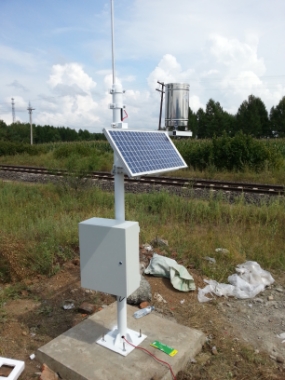

— Blogs —
—Products—
 Consumer hotline +8618073152920
Consumer hotline +8618073152920 WhatsApp:+8615367865107
Address:Room 102, District D, Houhu Industrial Park, Yuelu District, Changsha City, Hunan Province, China
Technical Support
Time:2024-04-14 15:01:43 Popularity:3330
1. Climatic conditions: The rain gauge should be installed in an area that reflects local precipitation conditions. This usually means that it should be placed in a rural or natural environment unaffected by urbanization (e.g. roofs, pavements, etc.) in order to collect accurate precipitation data.
2. Geographical conditions: The installation should be located so that it is not obstructed by mountains to ensure that precipitation can fall freely into the rain gauge. At the same time, a location that is not easily reached by wind should be chosen to minimize errors.
3. Representativeness and accuracy: The location chosen should be representative of the precipitation in the area, avoiding deviations in precipitation due to localized topography, buildings, etc. The location should also be representative of the area in which the rain gauge is located. The ideal installation location should be in an open, unobstructed area so as to ensure that the data collected is as accurate as possible.
4. Rainfall type: Different types of rainfall (e.g. light rain, heavy rain) may place different demands on the design and installation location of the rain gauge.
5. safety and stability: the installation location of the rain gauge should ensure that the equipment is safe from animal damage or natural disasters (e.g. floods, landslides, etc.), and it needs to be sufficiently stable to resist wind and other external forces, as well as to avoid human damage.
6. Maintenance and calibration: The installation site should be easily accessible for regular maintenance and calibration. Cleaning after precipitation and checking of equipment is critical to ensure data accuracy.
7. Data transmission: If real-time data transmission to a monitoring center is required, the conditions of the communication facilities at the installation location should be considered, such as the availability of a stable power supply and network coverage.
8. Terrain factors: Avoid installations in places with complex terrain such as ridges and valleys, where non-representative precipitation data may be collected.
Combining these factors, an optimal geographic location can be chosen to install the rain gauge to ensure that the precipitation data collected is both accurate and representative, providing reliable information for flood prevention and mitigation, water resource management and climate change research.

When installing a rain gauge, it is important to avoid the following common mistakes:
1. Improper mounting height: The rain gauge should be mounted at a sufficient height to ensure that it is not obscured by ground obstacles (e.g. leaves, shrubs, etc.). At the same time, it should not be mounted too high so that precipitation is not evaporated or lost before it reaches the rain gauge.
2. Influence of wind direction and speed: The rain gauge should be installed out of the influence of wind direction and speed so that the wind does not blow precipitation away from the collection area of the counter.
3. non-representative installation locations: locations should be selected that are representative of local precipitation conditions and avoid installations in unusually dry or wet areas where precipitation may not be representative of the entire watershed.
4. Inadequate maintenance and calibration: Maintenance and calibration should be performed regularly after installation to ensure data accuracy. Neglecting this can result in distorted data.
5. Problems with data transmission: If the rain gauge needs to transmit data remotely, it should be ensured that good communication facilities are available at the installation site, otherwise the data may not be transmitted in time or the transmission may be incomplete.
6. Improper installation angle: The rain gauge should be installed at the correct angle to ensure that precipitation falls evenly into the collection area of the counter.
7. Environmental disturbances: Installation of rain gauges should be avoided in areas with high levels of pollution or animal activity, which may affect the accuracy of the data.
8. Ignoring climate change: The choice of installation location should take into account local climate change, such as seasonal precipitation variations, extreme weather events, etc.
9. Failure to consider flood risk: Installation of rain gauges in areas where flooding is likely to occur should be avoided so that equipment is not washed away or damaged by flooding.
10. Unstable installation: The installation base of the rain gauge should be stable to avoid damage to the equipment due to vibration or instability.
11. Using the wrong equipment: Choose the right model of rain gauge to ensure that it is suitable for the required application scenario and environmental conditions.
12. Documentation is not exhaustive: the installation process should be a detailed record of the installation location, height, angle and other parameters for future maintenance and data verification.
Avoiding these errors can ensure that the rain gauge can accurately and reliably collect precipitation data to support related water resource management, meteorological research and disaster warning.
Related recommendations
Sensors & Weather Stations Catalog
Agriculture Sensors and Weather Stations Catalog-NiuBoL.pdf
Weather Stations Catalog-NiuBoL.pdf
Related products
 Combined air temperature and relative humidity sensor
Combined air temperature and relative humidity sensor Soil Moisture Temperature sensor for irrigation
Soil Moisture Temperature sensor for irrigation Soil pH sensor RS485 soil Testing instrument soil ph meter for agriculture
Soil pH sensor RS485 soil Testing instrument soil ph meter for agriculture Wind Speed sensor Output Modbus/RS485/Analog/0-5V/4-20mA
Wind Speed sensor Output Modbus/RS485/Analog/0-5V/4-20mA Tipping bucket rain gauge for weather monitoring auto rainfall sensor RS485/Outdoor/stainless steel
Tipping bucket rain gauge for weather monitoring auto rainfall sensor RS485/Outdoor/stainless steel Pyranometer Solar Radiation Sensor 4-20mA/RS485
Pyranometer Solar Radiation Sensor 4-20mA/RS485
Screenshot, WhatsApp to identify the QR code
WhatsApp number:+8615367865107
(Click on WhatsApp to copy and add friends)
